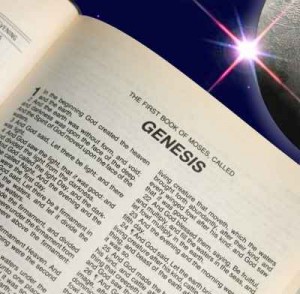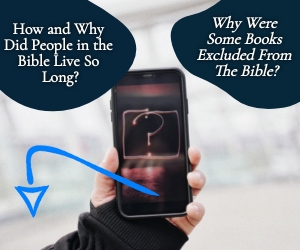Can public schools teach Creationism? Is it legal to teach Creationism along with evolution? What do the local, state, and federal laws say about this?
Should Creationism Be Taught in the Public Schools?
There is no reason that Creationism should not discussed in the public schools because evolution is being taught and after 125 years, it remains a theory. Additionally, evidence against the theory of evolution should be allowed to be discussed. There should be freedom to speak about the lack of fossil evidence like all of the missing links that should show transitional fossils evolving from one species into another. The only evidence that the theory of evolution has right now are sketches, drawings, and computer images that show purported transitions of one species evolving into another, different species. The fossil evidence has never supported this theory and students have every right to know all of the facts.

There is nothing wrong with the students entering into this discussion and advancing their beliefs on the origin of life, the universe, and the cause of both.
Teachers have every right, under the First Amendment rights, to do this. The Supreme Court has stated that, “teachers[do not] shed their constitutional rights to freedom of speech or expression at the school house gate” [Tinker v. Des Moines Indep. Sch. Dist., 393 U.S. 503, 506 (1969)]. It is crystal clear that teachers have “the right to discuss alternate theories of the creation of life and to independently research such topics” [Freiler v. Tangipahoa Parish Bd. of Educ., 975 F. Supp. 819, 828 (E.D. La. 1997), aff’d, 185 F.3d 337 (5th Cir. 1999)]. There is nothing wrong with the students entering into this discussion and advancing their beliefs on the origin of life, the universe, and the cause of both. The Supreme Court clearly stated that “teaching a variety of scientific theories about the origins of humankind to school-children might be validly done with the clear secular intent of enhancing the effectiveness of science instruction” [Edwards, 482 U.S. at 594 (1987)]. This would include Intelligent Design,(AKA Creationism). There is no law that states that Creationism can not be discussed along side the theory of evolution in the classroom as an alternative theory.
Critique of Fossil Evidence
Just as history, philosophy, and other disciplines are able to be critiqued, the theory of evolution should be allowed to be critiqued by presenting evidence contrary to it. One example is the Cambrian explosion, which is a fossil layer where almost every single plant, bacteria, flora, fauna, mammal, and animal fossil remains appear suddenly and without any apparent ancestral predecessors. It is called an “explosion” because of the fact that all life forms appear at one level with few fossils before and after it that show any type of transitional form. This sudden burst of fossils explode onto the scene that gives the appearance of all life forms similar to the account of creation in Genesis. If you look at the life forms in the Cambrian layers, many of these life forms are still with us today and yet remain unchanged. Many have become extinct but those who haven’t, are the same as they were in the Cambrian strata. Even Richard Dawkins concludes that the fossil record is imperfect as he writes “if we arrange all our available fossils in chronological order, they do not form a smooth sequence of scarcely perceptible change” (Dawkins 1996: 229).
Charles Darwin quite readily admitted that the archaeological evidence of fossils was not there to support the theory of evolution. The sudden appearance of whales with no known ancestors troubled him. Ultimately, Darwin could not find supportive fossil evidence showing a common ancestry with descending or ascending transitional forms. He thought that they would later be found as we dug deeper into the more ancient layers and he honestly stated that the lack of transitional fossil was one of the most worrisome problems of his theory. These life forms, which have been around, allegedly, for some 270 to 570 million years ago, are virtually unchanged. Darwin stated that, “The number of intermediate varieties, which have formerly existed, [must] be truly enormous … why then is not every geological formation and every stratum full of such intermediate links? Geology assuredly does not reveal any such finely graduated organic chain; and this, perhaps, is the most obvious and serious objection which can be urged against the theory” (Darwin 1859: 260-261).
The Local School Boards Authority
Local school boards are elected by local school district residents. These boards, although under the governance of the State Board of Education, have certain freedoms in what curriculum may be taught and what may be excluded. In fact, in a ruling of the School District of Abington Township v. Schempp, 374 U.S. 203, 225, (1963) the court wrote an opinion that “it certainly may be said that the Bible is worthy of study for its literary and historic qualities. Nothing we have said here indicates that such study of the Bible or of religion, when presented objectively as part of a secular program of education, may be affected consistently with the First Amendment.”
According to the Common Core State Standards Initiatives (corestandards.org) which are used for public schools, “Local teachers, principals, superintendents, and school boards will continue to make decisions about curriculum and how their school systems are operated [and] the federal government has had no role in the development of the common core state standards and will not have a role in their implementation”[1]. The Common Core State Standards Initiative will remain a state-led effort. The fact is that although some state authorities may limit their discretion to some degree, the local school boards and officials normally make the decisions regarding the curriculum and instructional materials for their schools and not the federal government. The U.S. Department of Education does not determine what should or should not be taught at the state level in any subject because each of the 16, 000 school districts in the states are financed and administered by their own state’s department of education and the local communities. This means that predominantly, each district adheres to the wishes of parents and the local school boards. The government has historically kept a “hands off” policy because the U.S. Constitution relegates the responsibility to local boards and their respective states. Parents of the children in their local school districts have more say than most realize, particularly since the local communities elect the school board members. Whether a district allows creationism or Intelligent Design to be discussed along side the theory of evolution in the classroom as an alternative is not illegal nor against any federal law. With this in mind, it is within the power of the local citizens to ensure that students and teachers have the ability to do so. It is their God-given right and they most certainly should speak up for it, defend it, and insist upon it, for there is no law against such parental wishes or desires.
Interested in some related Christian answers? Take a look at these articles:
Resources:
Darwin, Charles. The Origin of Species, (1859).
Dawkins, Richard. The Blind Watchmaker: Why the Evidence of Evolution Reveals a Universe Without Design (W W Norton & Co., 1996).
[1] Common Core State Standards. January, 2012, Accessed Sept 23, 2012 at: http://www.corestandards.org/frequently-asked-questions








 Welcome to What Christians Want To Know! The mission of this site is to equip, encourage, and energize Christians. Look for regular updates including Bible Verses, Bible Stories, Christian Quotes, Christian Answers, and much more. Find out
Welcome to What Christians Want To Know! The mission of this site is to equip, encourage, and energize Christians. Look for regular updates including Bible Verses, Bible Stories, Christian Quotes, Christian Answers, and much more. Find out 









